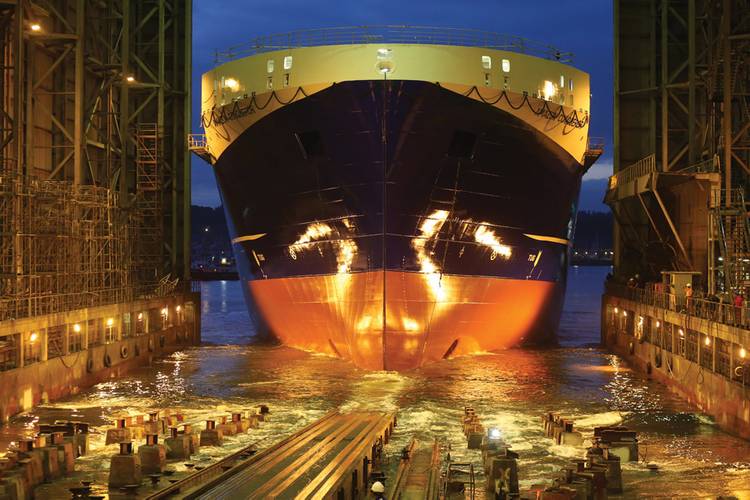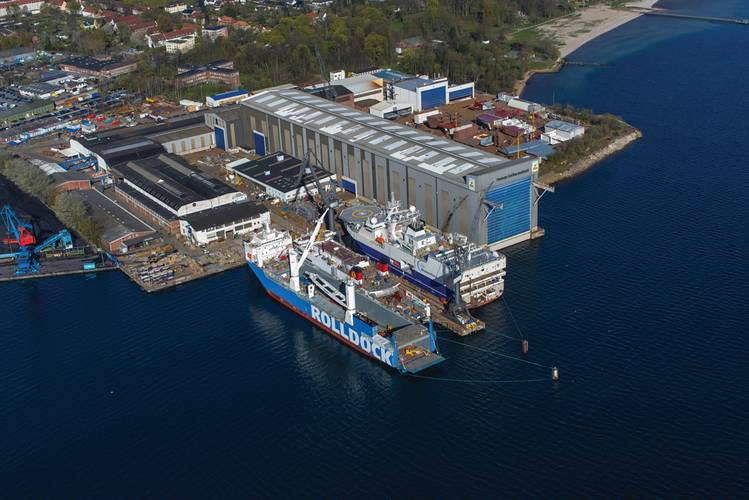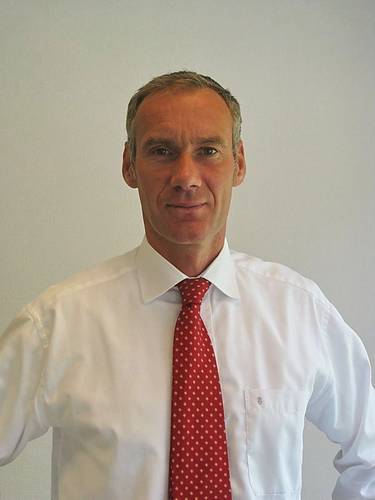Special Vessels “Built by Flensburger”
Flensburger Schiffbau-Gesellschaft, FSG, was founded in 1872 by a group of five local ship owners who previously had all their steamboats built in England as most German ship owners did in the 19th century. The first ship, the iron tall ship Doris Brodersen, was delivered to one of the founding partners in 1875. The cargo steamer Septima was commissioned a year later. In 1892 a floating dock, with a capacity of 2,300 tons has been built. At the turn of the year 1900, more than 2c000 employees worked at FSG.
Since then “Flensburger” has constructed, built and sold more than 760 units of different types of cargo steamers and motor vessels and has also built sailing ships, barges, floating dry docks, tankers, fishing vessels, passenger ships, naval ships and even submarines.
During the past 14 years, it became a global market leader in building custom-made RoRo vessels. This position was further enforced with its latest order, when FSG was tasked to build the worldwide first RoRo Ferry, driven by natural gas, for the Australian SeaRoad shipping company.
Now, FSG concentrates for the past three years on the seminal offshore-market, and it was able to win international clients for building heavy lift vessels, seismic vessels and well intervention vessels.
Raimon Strunck, Vice President Sales, talks with Maritime Reporter & Engineering News German editor Peter Pospiech, about the positioning of the yard as well as the reason for the overtaking by the Norwegian company SIEM Industry.
Mr. Strunck, please give us a short overview of your life and your career since you have been in your current position?
I was born 1965 in Dortmund, Germany. I hold a mechanical engineering degree from the Technical University of Hanover. After this I started my career as a project related engineer with Preussag group (now TUI), for whom I worked in several daughter companies, e. g. at Deutag on drilling rigs in Oman, Protec Feu S.A. in France, Noell Harbour -Technic and finally at HDW in the submarine division in 1995. Fascinated by the shipbuilding business I decided to stay. In 1997 they offered me the position as head of planning department at Lisnave Repair-Shipyard, Lisbon.
At this time my main focus was on reorganisation of the planning department and the relocation of the repair facilities from Lisbon to Setubal site. After two years in Portugal I went back to Germany and joined Flensburger Schiffbau-Gesellschaft. Under my project management the Flensburger delivered in total 26 RoRo and RoPax vessels until 2011. At this time I have been announced to be Vice President Sales at Flensburger Schiffbau-Gesellschaft.
Many German as well as foreign shipyards disappeared during the last few years, but FSG has successfully defended its position in the market. What are the reasons for this FSG success model? How do you see the future of ship building in Germany, and what are the reasons for the overtaking - under the aspect of being so successful – by the Norwegian company Siem Industries?
We will build, also in the future, accurately according to the customer requirements. Beside this we want to be worldwide more known and position ourselves even more broadly. Our core business has been the RoRo segment, which we further developed with RoPax and ConRo as well as Navy transport vessels. This was complemented with highly specialized vessels of the offshore industry such as seismic research-,heavy lift or well intervention vessels just to name a few.
There exist many shipyards, but ours is different. Thanks to successful designs and innovative concepts we hold about 30 percent with the delivery of RoRo vessels – and with this we are world market leader. We guarantee a maximum of consulting from the very beginning. With our longstanding manufacturing experience and a network of European wide partners in the field of research and development, we help our potential customers from phase one onward. It is important for us to pick up ideas from our customers, develop them further and present solutions. This is true of all areas: whether we are talking about cargo concept, passenger sector, drive train or in the field of more untypical shipbuilding segments like load and unload simulation, on- and off-board logistic and routing optimization and of course the hydrodynamic optimization as well as seakeeping performance which is a very significant factor in the shipping and offshore business.
A vessel “Built by Flensburger is Custom Made.”
And what about Siem Industries?
All these mentioned factors have been very interesting for Siem Industries. The Norwegians are a globally operating corporation with diversified industrial interests, which can be mainly found in five industrial areas: oil and gas services industry, ocean-transport of refrigerated cargoes and automobiles, potash-mining, finance and Swedish industries. The Siem Group of companies (including subsidiaries and affiliates) operates 145 vessels and owns a controlling interest in one of the most successful Off-shore Shipping Companies on a global scale (Siem Offshore) and the oil service company SubSea 7.
The proper foundation for the sustainable development and positive outlook for FSG was built, when Siem Offshore ordered two well-intervention-vessels at our yard, in February this year. Lastly, the international network of the new owner, speaks for the positive prospects coming along with this well thought-through and deliberate decision. In addition to this and this is very much important: we are really very glad that with this take over also all our long-standing employees will remain!
With the take-over, we expect that FSG gets further established and will hold a stronger position on the offshore-market. Siem Industries is a successful, globally ex-panding and financially strong family-owned enterprise. It allows us – the Flensburger Shipyard – to continue our successful developments in the global offshore-market.”
Please describe your current order income?
To date the corporation has the following order-book: one RoPax Ferry for CMAL (Scotland), that will leave the yard in last week of October, a second seismic vessel for WesternGeco (England), two offshore-well-intervention-vessels for Siem Offshore (Norway) as well as an innovative Natural Gas based RoRo Ferry for SeaRoad (Australia). With these upcoming projects, FSG will be operating at full capacity until the 3rd quarter of 2016.
A final private question: how and where does Raimon Strunck relax?
I’m a positive thinking human being and enjoy life, particularly with my wife and my kids. Beside this: whenever I have time I go in for sports: run and row.


















